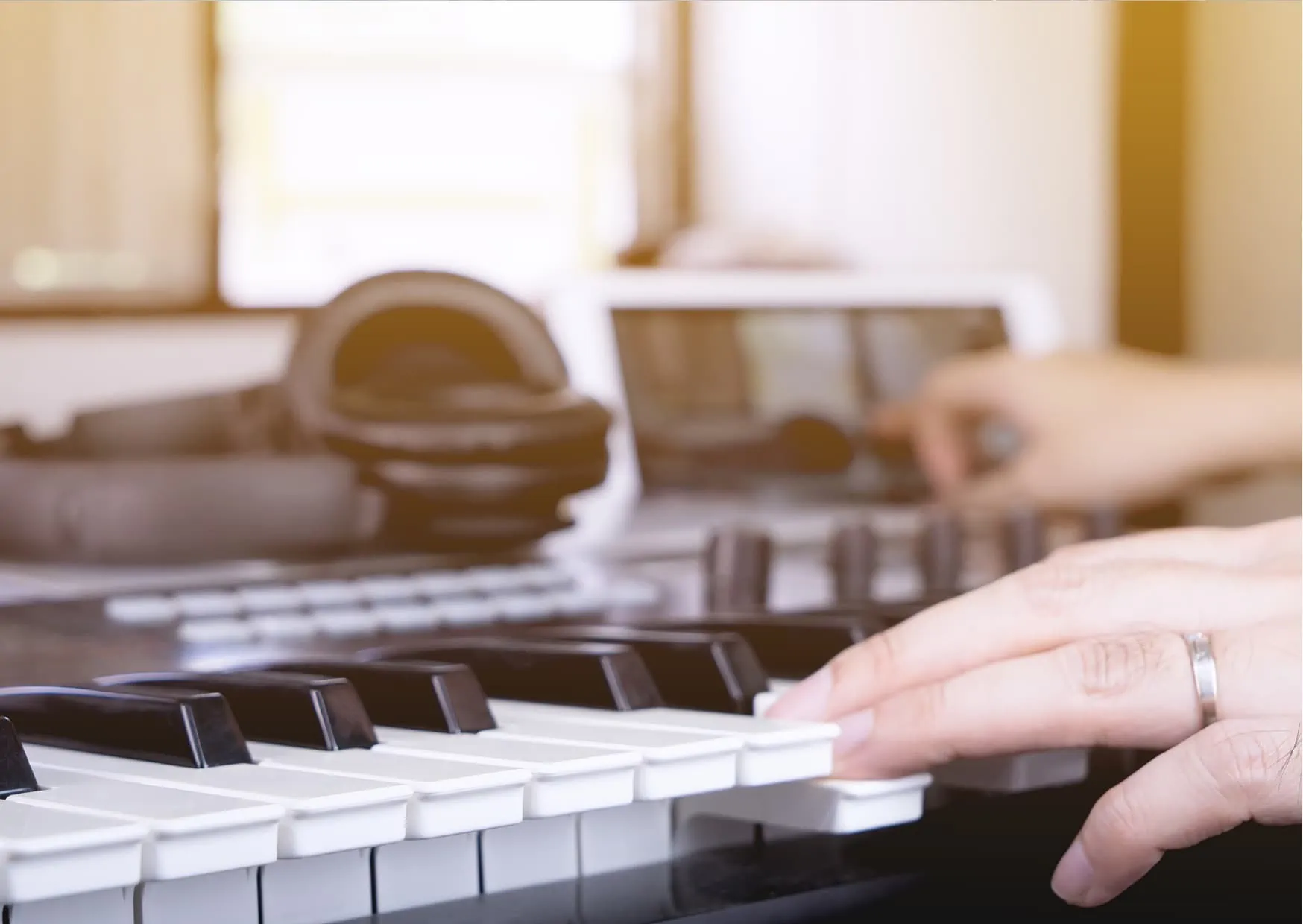How to start your portfolio career – online income streams for music producers (part 2)
When starting out, you likely want to build a portfolio career which includes multiple income streams for music producers. (Not sure what a portfolio career is? You can check out the first part of our series on portfolio careers here.)
Building a portfolio career allows you to tailor work to what you love the most but also enjoy variety in your work by fulfilling multiple roles. These could be major roles which dominate most of your portfolio or smaller ‘side hustles’ you can carry out during spare time. Either way, maintaining multiple incomes gives you a well-rounded base as a music producer and demonstrates an impressively broad skillset.
Most of these ‘side hustles’ have the benefit of being able to work remotely, for example in a home studio or other dedicated workspace, and are a great way of becoming a prolific producer. Below we’ll look at some entry-level online income streams which you might consider to kickstart your production portfolio career.
Library Music
Music libraries are companies which host a large catalogue of pre-written music, also known as ‘production music’ or ‘stock music’. Audio editors can then browse and purchase a sync license to use this music in their film, TV show or any other type of media. Unlike scoring a film, the music is not written for specific visuals, but rather to a theme or concept.
The start of the golden age for music libraries was in the 1960s and 70s. It saw tracks used in classic TV shows like ‘The Sweeney’. Others became a well-loved feature of the shows they accompanied. For example the works of British composer Keith Mansfield became theme tunes for the opening of the Wimbledon tennis tournament.
In order to get a music library to pick up your music, you’ll need to put together a collection of your best work and pitch it to a production company. If they like your music, they may start sending briefs with themes or concepts for you to write music for. Now that you’re officially a library music composer, you would receive royalties every time your music is used and in most cases you also receive a flat fee every time someone purchases a license.
Submitting your music to libraries requires a combination of patience, good pitching skills and a large collection of high-quality music. It can take some time for royalty earnings to reach you, but they can really start to add up when they do. It is one of the great long-term income streams for music producers. Libraries also welcome a whole plethora of music genres and styles so there is plenty of room for every taste and every producer.
Beatmaking & Sample Packs
Similar to library music is the online beat market which has blown up over the past 5-10 years. Instrumental tracks are sold with a license for other artists to add their vocals over or for content creators to use in their projects. This environment is mainly centred around hip-hop, though almost any genre could be sold as a beat.
Unlike library music, there are no barriers for entry. Anyone can make an account on a beat-selling platform and start selling. You can also choose whether to list exclusive or non-exclusive licenses and provide various pricing options.
If you’re interested in providing something to other producers, you may like to sell assets such as sample packs containing instrumental melodies, drum beats, vocal ad-libs and chord progressions. Producers can download these audio files and incorporate them into their own tracks without incurring any royalty fees. The largest platform for this is Splice. It is a music production collaboration tool. A subscription platform that allows users unlimited access to their collection of over 3 million sounds. Examples of sample pack creators include MXXWLL, a hip-hop and funk producer from Sydney whose beats have attracted attention from the likes of Snoop Dogg and Ty Dolla $ign, resulting in collaborations with the latter.
Subscription Model & Monetised Content
Did you build a large audience or fanbase on social media (or are planning to)? You may the opportunity to generate income through subscription-only content or through ad revenue on platforms such as YouTube. Subscription models involve creators using sites like Patreon to provide exclusive perks and content in exchange for a monthly payment. Exclusive content can include the likes of private livestreams, unreleased music or behind-the-scenes content. Patreon hosts over 6 million subscriber ‘patrons’, with more than 210,000 supported creators on the platform.
Dominating the YouTube music production scene are creators such as Andrew Huang; with 2.26 million subscribers this Toronto-based musician and producer makes videos with tutorials, challenges, experiments, reviews and more. Creators on YouTube can expect to earn anywhere between $3-$5 per thousand views. Many will choose to supplement this with paid sponsorship collaborations. Monetisation on YouTube starts once you have ticked over 1,000 subscribers. You will also have to generate over 4,000 watch hours in the last 12 months.
Making the Most of Your Portfolio Career
These are just a few online income streams for music producers you could start adding to your career, helping you build a reputation as a prolific producer.
When you’re ready to elevate your career to the next level, CUA60520 Advanced Diploma of Music teaches all the skills a modern producer needs to expand your portfolio career. This includes everything from technical skills like audio engineering and post-production, to business skills like artist management.
Come join our Open Day or make an appointment to speak with our team to learn more about our extensive curriculum and the different roles, types of work and possible careers.


